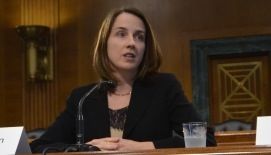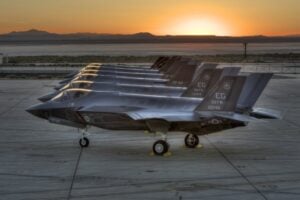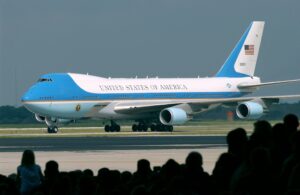Mattis Orders Air Force One, F-35 Reviews As Trump Opens Door To $60B DoD Budget Boost
Posted on

President Trump
WASHINGTON: After weeks of uncertainty and mounting evidence that only larger deficits were the path to a significant boost to the US military, President Trump has signaled the fiscal spigots will be opened in the interests of a larger and more capable US military.
“I think it’s significant in signaling this is a priority among the alphabet soup list of growing priorities for the new administration and Congress,” Mackenzie Eaglen, a member of the Breaking Defense Board of Contributors, says in an email. “But it still doesn’t change much the trajectory of his overall federal budget under (OMB director nominee Mick) Mulvaney.

Mackenzie Eaglen
“What it does mean is that the buildup will ultimately get done (mostly through debt-financing) after this Congress bangs its head against the wall of the forthcoming ideologically radical budget and watching it fail at a later date,” Eaglen said. Eaglen had predicted Trump’s policy choice earlier and made clear in the piece what his choices are.
Sen. John McCain appears to have helped prepare this battlefield, slamming Trump’s pick for OMB director, Mike Mulvaney, earlier this week for voting against military spending as a member of the House. Although McCain has said he might oppose Mulvaney’s nomination, it now looks as if the House member will squeak through.
Sean Hannity, one of Trump’s favorite Fox broadcasters, asked the president last night how important a balanced budget is to him.
” I want a balanced budget eventually. But I want to have a strong military. To me, that’s much more important than anything,” Trump said, leaving little room for him to be misinterpreted.

F-35As at Luke Air Force Base
The president has trumpeted how he is going to help control the costs of weapons and he told Hannity: “And I’m negotiating the price of airplanes, can you believe this? But I understand airplanes. I’ve bought a lot of airplanes.”
Defense Secretary Jim Mattis today ordered complete program reviews of the F-35 Joint Strike Fighter and Air Force One programs, carefully noting in the memos that both are “critical acquisition” programs.” Appearing to indicate that Air Fore One is the lower hanging fruit, Mattis said Deputy Defense Bob Work will execute the review with an eye to “substantially reduce the program’s cost while delivering critical capabilities.” The F-35 review is being done to “significantly” reduce costs.
During his interview with Hannity, Trump claimed he “cut off hundreds of millions of dollars off one particular plane, hundreds of millions of dollars in a short period of time. It wasn’t like I spent, like, weeks, hours, less than hours, and many, many hundreds of millions of dollars. And the plane’s going to be better.” It’s unclear whether Trump was pointing to the F-35 or to Air Force One, both of which he has lambasted for high costs. It is clear that Trump’s public pressure on Lockheed Martin, builder of the F-35, appears to have them more publicly amenable to agreeing to lower costs. But we’ll have to see what LRIP 10, the next batch, looks like.

Air Force One
Of course, the F-35’s cost has been dropping for several years now, and Air Force One is only budgeted for $170 million in spending so far, although the program is estimated to eventually cost $3.73 billion. The main drivers for Air Force One costs are, of course, survivability and communications. The Secret Service plays a major — if usually unacknowledged — role in setting the requirements for the plane and for the helicopters used to ferry the president and his top aides. So if the president really wants to control costs for Air Force One, he may need to push the people who protect him to lower their sights.
Subscribe to our newsletter
Promotions, new products and sales. Directly to your inbox.
